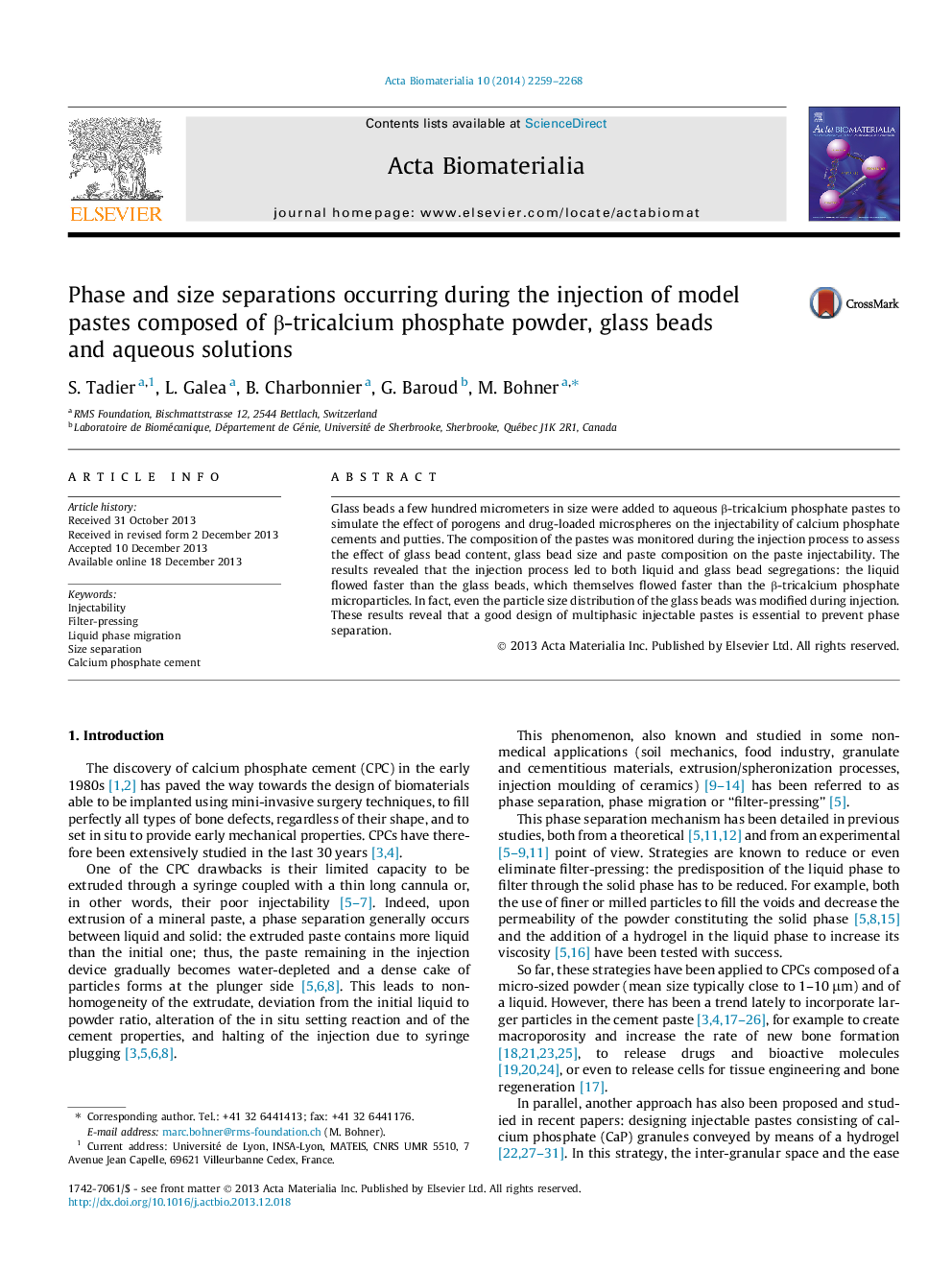| Article ID | Journal | Published Year | Pages | File Type |
|---|---|---|---|---|
| 10159232 | Acta Biomaterialia | 2014 | 10 Pages |
Abstract
Glass beads a few hundred micrometers in size were added to aqueous β-tricalcium phosphate pastes to simulate the effect of porogens and drug-loaded microspheres on the injectability of calcium phosphate cements and putties. The composition of the pastes was monitored during the injection process to assess the effect of glass bead content, glass bead size and paste composition on the paste injectability. The results revealed that the injection process led to both liquid and glass bead segregations: the liquid flowed faster than the glass beads, which themselves flowed faster than the β-tricalcium phosphate microparticles. In fact, even the particle size distribution of the glass beads was modified during injection. These results reveal that a good design of multiphasic injectable pastes is essential to prevent phase separation.
Related Topics
Physical Sciences and Engineering
Chemical Engineering
Bioengineering
Authors
S. Tadier, L. Galea, B. Charbonnier, G. Baroud, M. Bohner,
